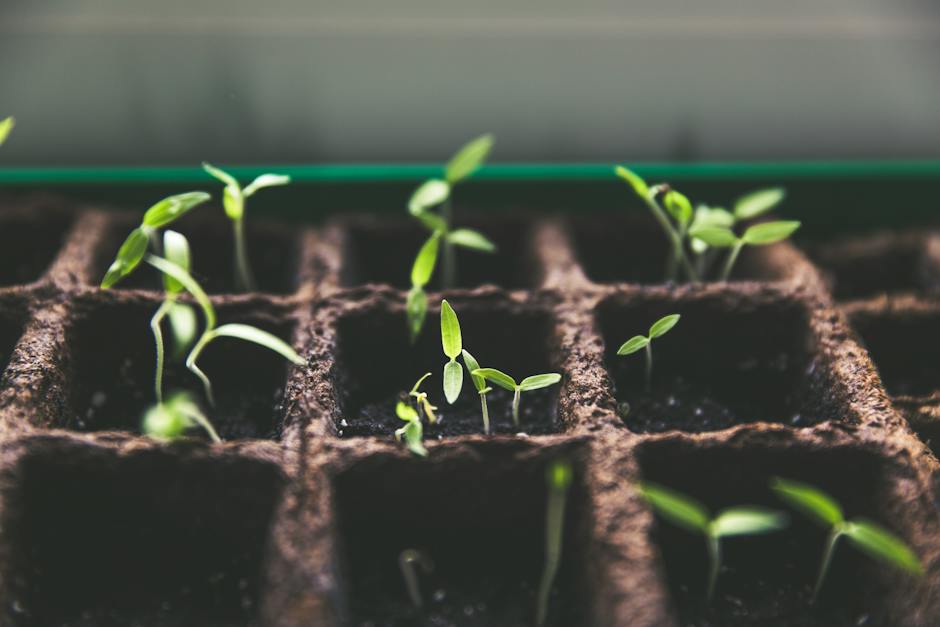How to Plant Sprouted Potatoes Effectively?
Planting sprouted potatoes can be a rewarding experience, allowing you to grow your own delicious and nutritious tubers. But how do you ensure that you plant them effectively to maximize your yield? In this article, we will explore the best practices for planting sprouted potatoes, including tips and techniques to help you achieve a bountiful harvest.
Choosing Healthy and Strong Potato Sprouts
The first step to planting sprouted potatoes effectively is to choose healthy and strong sprouts. It is important to avoid shriveled or dry potatoes, as they may not have the vitality to produce a good crop. Look for sprouts that are firm and have a vibrant color.
Pre-Sprouting Potatoes
Pre-sprouting, or chitting, is a technique that can give your potatoes a head start and improve their chances of successful growth. To pre-sprout your potatoes, place them in a cool, well-lit area for a few weeks until the sprouts are about a half-inch to an inch in length. This process allows the sprouts to develop and prepares them for planting.
Preparing the Potato Transplant Site
Before planting your sprouted potatoes, it is essential to prepare the transplant site. Start by incorporating organic material like compost or aged manure into the soil to improve its nutrient content and drainage. This will provide your potatoes with the necessary nutrients and help prevent waterlogging.
Planting the Potato Sprouts
When planting sprouted potatoes, you have two options: planting whole potatoes or cutting them into smaller pieces. If you choose to cut them, make sure each piece has at least one or two sprouts. Plant the sprouted potatoes vertically, with the sprouts facing up, in a hole that is 4 to 6 inches deep. Space the plants 12 to 16 inches apart to allow for proper growth.
Hilling for Support and Growth
To support the growth of your potato plants and prevent the tubers from turning green, it is important to hill or mound more soil around the base of the plants. This process should be done about 15 days after planting. Hilling not only provides support but also covers the developing potatoes, preventing them from exposure to sunlight.
Harvesting the Potatoes
Knowing when to harvest your potatoes is crucial for optimal yield. For small tender new potatoes, you can start harvesting at least 8 weeks after planting, once the plants have set flowers. For full-sized storage potatoes, wait until the plants die back and turn yellow, usually 60 to 100 days after planting. Cut back the foliage and allow the potatoes to cure in the ground for a few days before gently digging them up.
Additional Tips for Success
While the above steps cover the basics of planting sprouted potatoes effectively, there are a few more tips that can further enhance your chances of success. Here are some additional tips:
- Provide ample sunlight: Plant sprouted potatoes in a location that receives 6 to 8 hours of sunlight per day to ensure proper growth.
- Consistent watering: Water your potato plants regularly, aiming for about 1 to 2 inches of water per week. Ensure the soil is moist but not waterlogged.
- Use balanced fertilizer: Apply a balanced fertilizer to provide essential nutrients to your potato plants. This will help promote healthy growth and maximize yield.
- Plant at the right time: Ideally, plant sprouted potatoes in early spring when the soil has warmed to at least 45 degrees Fahrenheit and after the last frost date in your area.
By following these steps and tips, you can effectively plant sprouted potatoes and increase your chances of a successful harvest.
Related Websites:
FAQs:
Q: Why do potatoes sprout?
Potatoes sprout due to their natural growth process. As the potato ages, it develops nodes called ‘eyes’ that eventually sprout into new plants. This sprouting process is a sign that the potato is ready for planting.
Q: What are the benefits of using sprouted potatoes for planting?
Using sprouted potatoes for planting offers several benefits. Firstly, sprouted potatoes have a higher chance of successful growth compared to non-sprouted ones. Secondly, sprouting helps break dormancy, allowing the potato to start growing faster. Lastly, sprouted potatoes are more resistant to diseases and pests, resulting in healthier plants.
Q: How do I select the right sprouted potatoes for planting?
When choosing sprouted potatoes for planting, consider their size and firmness. Opt for potatoes that are medium-sized and firm to the touch, as they indicate good health. Avoid potatoes that are soft, shriveled, or have mold growth as these may not yield successful plants.
Q: What are the ideal soil conditions for growing potatoes?
Potatoes thrive in loose, well-draining soil enriched with organic matter. The soil should have a slightly acidic pH level between 5.0 and 6.5. It is important to ensure good soil moisture retention while preventing excessive waterlogging, as this can lead to rotting.
Q: How do I properly plant sprouted potatoes?
To plant sprouted potatoes, follow these steps: 1. Dig trenches or prepare raised beds in well-prepared soil. 2. Place the sprouted potatoes in the trenches or beds, with the sprouts facing upward. 3. Cover the potatoes with about 4 inches of soil. 4. Maintain proper spacing of around 12 inches between each potato. 5. Water thoroughly after planting and keep the soil consistently moist.






